Resources for Gender, Romantic and Sexual Minority People
by @LeftistTwink on Twitter
If you have anything to add, feel something in this carrd doesn't belong/is worded incorrectly or have any thoughts or constructive criticism at all, please DM me on Twitter!

Lesbians and WLW (Women-Loving-Women)
Lesbians are women (including people who identify only partially as women) who are exclusively attracted to women, romantically (homoromantic) and/or sexually (homosexual).
The word 'lesbian' is derived from the name of the Greek island of Lesbos, which was home to the 6th-century BCE poet Sappho, who expressed love for women in her poetry.
Sapphic and Women-Loving-Women (WLW) are terms that refer to women who are attracted to women, romantically and/or sexually, regardless of whether such attraction is exclusive or not; these labels are umbrella terms which unify all women who love women, such as lesbians, bisexual women, pansexual women, etc.
"Sapphic" is derived from Sappho. Since these are umbrella terms, they are typically not used as identities on their own, but they can be if desired.
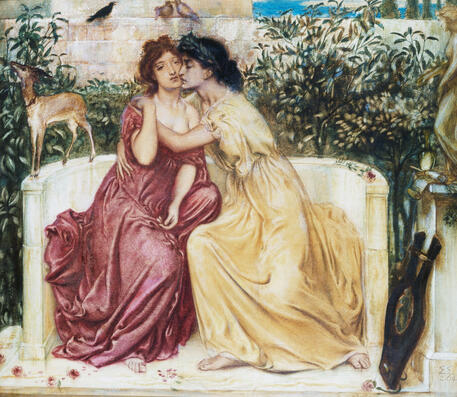
Sappho and Alcaeus by Sir Lawrence Alma-Tadema
Resources for lesbians, WLW and WSW (women who have sex with women)
- LGBT Foundation's Sex Guides: Vaginal Sex
- LGBT Foundation's Sex Guides: Oral Sex
- LGBT Foundation's Sex Guides: Anal Sex
- NHS - Sexual health for lesbian and bisexual women
- Healthline - How Do Lesbians Have Sex? 28 Things to Know Before Your First Time
- American College of Obstetricians and Gynecologists (ACOG) - Health Care for Lesbians and Bisexual Women
- AfterEllen
- lesbian.com
- Autostraddle
- KitschMix
- Reddit - r/actuallesbians
- Lesbian News
- Feedspot -Top 100 Lesbian Blogs, Websites & Influencers in 2020
- The Lesbrary
- Cosmopolitan - An essential safe sex guide for lesbian, bisexual and queer women
- OutLife - Safe Sex and STIs - a guide for lesbians
- Guy's and Saint Thomas' NHS Foundation Trust - Lesbian and bisexual women’s health (9 page pdf)
- Shape -How to Have Safe Sex When You're Sleeping with Another Woman
- CURVE
- Lesbian Reading Room
- The Seattle Lesbian
- DIVA
- The Proud Trust - A sex and relationships guide for lesbian and bisexual women (32 page pdf)
- How Did We Get Here? - Lesbian Flag History
- Am I A Lesbian? Masterdoc
- Lesbian Herstory Archive
- Stone Butch Blues
- Lesbian Bar Project (US)
Gay Men and MLM (Men-Loving-Men)
Gay men are men (including people who identify only partially as men) who are exclusively attracted to men, romantically (homoromantic) and/or sexually (homosexual).
The term "vincian" is sometimes used as a masculine equivalent to the term lesbian. The term was coined in honor of Italian polymath Leonardo da Vinci, who is widely rumored to have been involved in multiple MLM relationships.
Achillean and Men-Loving-Men (MLM) are terms that refer to men who are attracted to men, romantically and/or sexually, regardless of whether such attraction is exclusive or not; these labels are umbrella terms which unify all men who love men, such as gay men, bisexual men, pansexual men, etc.
The word achillean comes from the name of the hero in the Iliad, Achilles, who was romantically involved with another man, Patroclus. Since they are umbrella terms, they are typically not used as identities on their own, but they can be if desired.
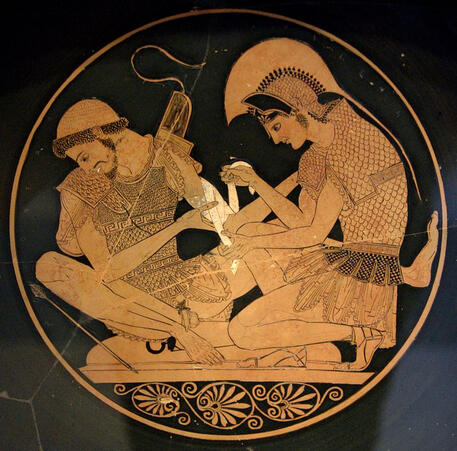
Achilles tending Patroclus' wounds, c. 500 BCE
Resources for gay men, MLM and MSM (men who have sex with men):
Sexual resources:
- LGBT Foundation's Sex Guides: Anal Sex
- LGBT Foundation's Sex Guides: Oral Sex
- LGBT Foundation's Sex Guides: Vaginal Sex
- Gay Men's Sexual Health Alliance (GMSH) - The Sex You Want
- NHS - Sexual health for gay and bisexual men
- The Advocate - 10 Tips For Better Gay Sex
- GMFA - the gay men's health project
- The Body - The HIV/AIDS Resource
- Gay Men's Sexual Health Alliance (GMSH)
- Sex ed for bi guys
Health resources:
- CDC - Gay and bisexual men's health
- NHS Dagenham and Barking - Domestic Violence: A resource for gay & bisexual men (23 page pdf)
- Stonewall - Gay and Bisexual Men's Health Survey 2013 (32 page pdf)
- GMFA - the gay men's health project
- John Hopkins Medicine - Gay and Bisexual Men's Health Issues
- Gay Therapy Center - The Gay Man's Guide to Building a Better Life
Community resources:
Mspecs
(multiromantic and multisexual spectrums)
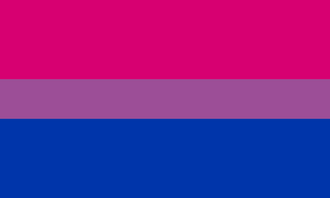
bisex. and birom. pride flag
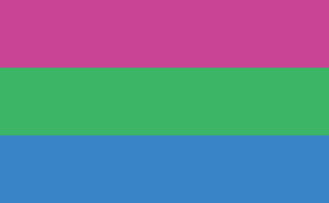
polysex. and polyrom. pride flag
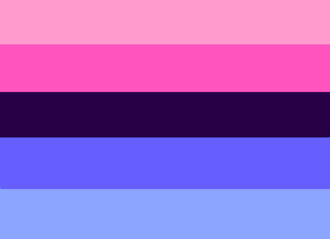
omnisexual and omniromantic pride flag

pansex. and panrom. pride flag
The Multiromantic spectrum encompasses a range of identities which describe experiences of romantic attraction to people of more than one gender. The Multisexual spectrum encompasses a range of identities which describe experiences of sexual attraction to people of more than one gender. Together, these spectrums and the people who are on them are referred to as mspec.
People who are not mspec are either aspec or they are monoromantic and/or monosexual- experiencing attraction to people of only one gender (heteroromantics/heterosexuals and homoromantics/homosexuals). These individuals experience monosexual/monoromantic privilege, as mspecs face a secondary level of challenges (such as discrimination and prejudice) within both allocishet (non-queer) and queer/GRSM spaces. Discrimination and prejudice towards mspecs is called multiphobia/mspecphobia or biphobia.
Bisexual and biromantic are the most well known mspec identities. People who are biromantic and/or bisexual are attracted to people of two or more genders, often (but by no means always) men and women.
Polysexual and polyromantic people are attracted to people of three or more genders. Some people also define this orientation as being attracted to "multiple but not all" genders.
Omnisexual and omniromantic people are attracted to people of all genders, where gender is a factor in attraction. This orientation is very similar to pansexual/panromantic in that omniromantic/omnisexual people are attracted to people of all genders, however the factor of gender in attraction is an important nuance for people who identify this way.
Pansexual and panromantic people are attracted to people of all genders, where gender is not a factor in attraction. This orientation is sometimes described as being "gender-blind" as gender does not matter at all to people who identify this way.
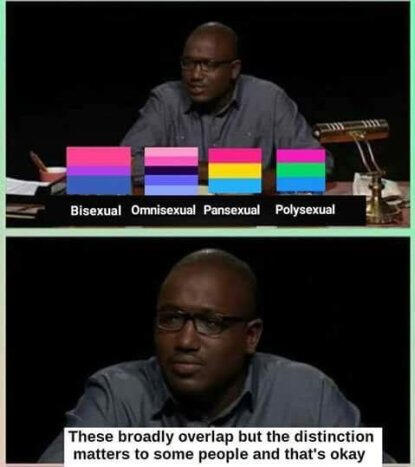
Resources for mspec people
Unfortunately most of these resources only use the term bisexual, however mspecs of all identities will find them useful, and many acknowledge other mspec identities
- Bisexual Resource Center
- Bisexual Health Awareness Month
- Bisexual Resource Center - sexual health tips for the bi+ community & best practices for providers (2 page pdf)
- Bisexual Resource Center - mental health in the bi+ community: bi+ antagonism, bi+ erasure, and getting help (2 page pdf)
- Bisexual Resource Center - Books on Bisexuality: An Annotated Listing (2 page pdf)
- Human Rights Campaign - A RESOURCE GUIDE TO COMING OUT AS BISEXUAL (24 page pdf)
- Human Rights Campaign - Supporting and Caring for our Bisexual Youth (28 page pdf)
- The Open University - The Bisexuality Report: Bisexual inclusion in LGBT equality and diversity (49 page pdf)
- GLAAD - Reporting on the Bisexual Community: A resource for journalists and media professionals (12 page pdf)
- Bi Radical - Bi: Notes for a Bisexual Revolution
- Bi Radical - The monosexual privilege checklist
- The Body - The HIV/AIDS Resource
- Journal of Bisexuality
- bi.org
- Bisexual Organizing Project (BOP)
- Bisexual Organizing Project - Resources
- Biphoria - Bisexuality & Mental Health
- Biscuit - Hoisting our colours: A brief history of the bisexual pride flag
Aspecs
(aromantic and asexual spectrums)
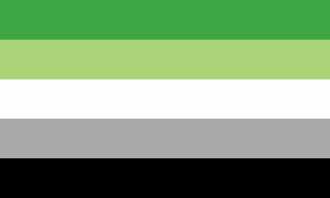
aromantic pride flag
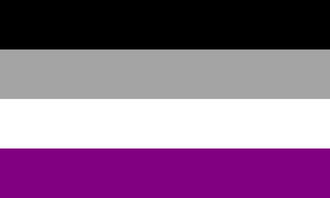
asexual pride flag
Aromanticism is a romantic orientation, which describes people whose experience of romance is disconnected from normative societal expectations, generally due to experiencing little to no romantic attraction, but also due to feeling repulsed by romance, or being uninterested in romantic relationships.
Asexuality is a sexual orientation, which describes people whose experience of sexuality is disconnected from normative societal expectations, generally due to experiencing little to no sexual attraction, but also due to feeling repulsed by sexuality, or being uninterested in sexual relationships.
Asexuality and aromanticism are both spectrums, in that they are not uniform experiences and contain many sub-identities. For this reason, these orientations are often described as the asexual spectrum and the aromantic spectrum. Together, both spectrums and the people who fall on them are called "aspec".
People who are not aspec (those who experience typical romantic and sexual attraction) are called allosexual and/or alloromantic (this includes mpsecs, heteroromantics/heterosexuals and homoromantics/homosexuals). These individuals experience allosexual/alloromantic or allo privilege, as aspecs face a secondary level of challenges (such as discrimination and prejudice) within both allocishet (non-queer) and queer/GRSM spaces. Discrimination and prejudice towards aspecs is called aphobia.
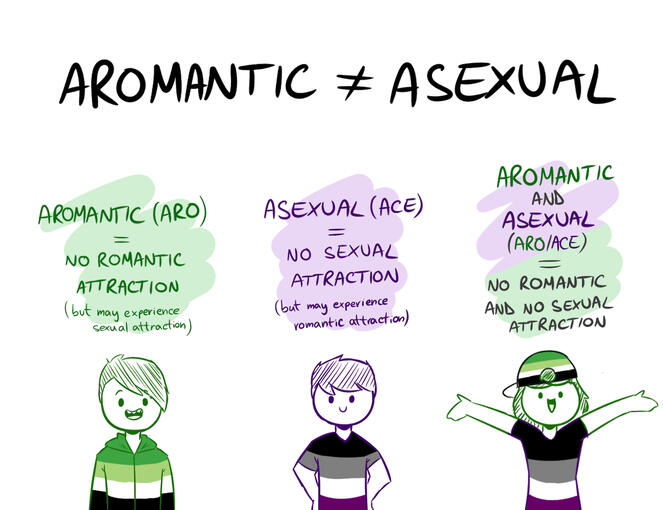
by maria-artz on tumblr
Resources for aromantics/aro-specs:
- AUREA - Aromantic-spectrum Union for Recognition, Education and Advocacy
- Guide to Aromanticism
- Aromantic Surveys
- Reddit - r/aromantic
- aromantic.lgbt - Resources
- Unmarried Equality
Resources for asexuals/ace-specs:
- AVEN - The Asexuality Visibility and Education Network
- AVEN - Links and Resources Masterpost
- The Asexual Agenda - 101 Resources
- Ace Week 2020 - October 25-31
- The Trevor Project - Asexuality 101 (pdf)
- Time - How To Tell If You're Asexual, excerpts from The Invisible Orientation: An Introduction to Asexuality by Julie Sondra Decker
- Asexuality Archive - Asexuality: A Brief Introduction (135 page pdf)
Resources for the aspec community:
TGNC People / Gender Minorities
(TGNC = Trans and Gender-Non-Conforming)

transgender pride flag
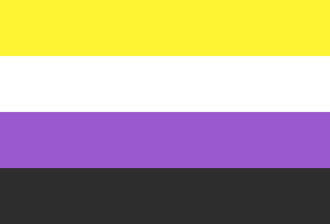
non-binary pride flag
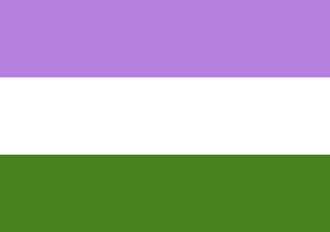
genderqueer pride flag
A transgender or trans person is someone who does not identify, partially or entirely, with the gender they were assigned at birth. Non-binary people fall under the trans umbrella (although not every non-binary individual is comfortable being referred to as transgender/trans) and are people whose gender lies outside the binary of man/boy and woman/girl, partially or entirely.
People who are not transgender/trans (people who fully and exclusively identify with the gender they were assigned at birth) are called cisgender or cis. These individuals experience cisgender privilege, as trans people face a secondary level of challenges (such as discrimination and prejudice) within both allocishet (non-queer) and queer/GRSM spaces. Discrimination and prejudice towards trans people is called transphobia.
Gender-non-conforming (GNC) people are people of any gender or gender experience (cisgender/transgender) whose gender expression does not conform to traditional expectations. Although non-binary and gender-non-conforming are umbrella terms and describe large groups of people with varying identities and labels, some people use these terms, sometimes interchangeably, as their sole identity.
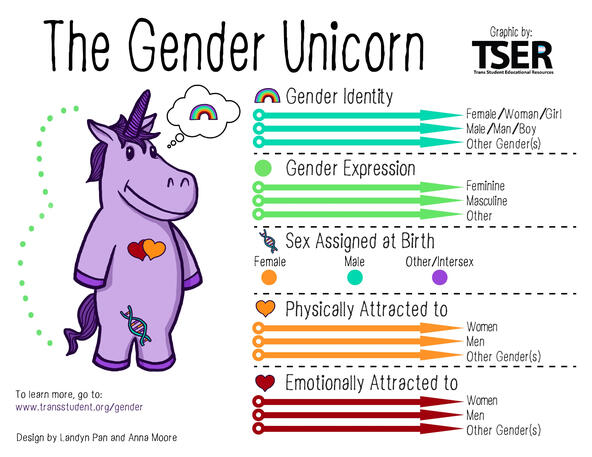
Resources for TGNC people:
- Gendered Intelligence: Understanding gender diversity in creative ways
- Digital Transgender Archive
- GenderGP -WORLDWIDE TRANSGENDER HEALTH AND WELLBEING SERVICES
- Terrence Higgins Trust - Sex as a trans man
- Terrence Higgins Trust - Sex as a trans woman
- World Professional Association for Transgender Healthcare (WPATH)
- Mermaids
- Gender Identity Research and Education Society (GIRES)
- NHS - Gender dysphoria
- Transgender Hub
- Gay Men's Sexual Health Alliance (GMSH) - PRIMED2: A Sex Guide for Trans Men Into Men (CW: NSFW, some explicit imagery)
- The Beaumont Society
- Queer Trans Men
- The Trevor Project - Trans + Gender Identity
- Gender Spectrum
- USC Rossier - Students and Gender Identity: A TOOLKIT FOR SCHOOLS
- Scottish Trans - All Resources
- WPATH - Recommended Reading
- MyTransHealth (USA)
Resources specifically for non-binary people:
Intersex People

intersex pride flag
Intersex people are individuals born with any of several variations in physiological sex characteristics including chromosomes, gonads, sex hormones or genitals that do not fit the typical definitions for "male" or "female" bodies.
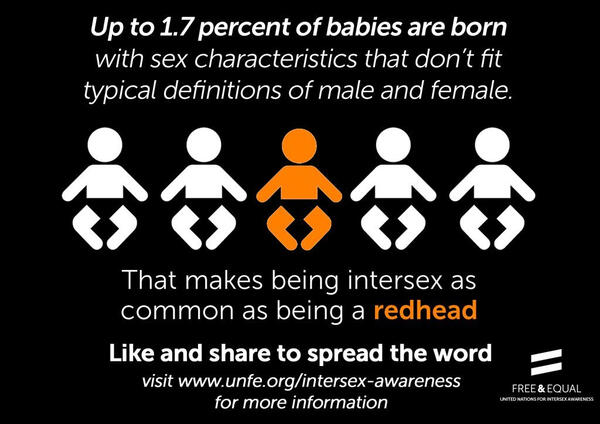
Resources for intersex people:
- American Psychological Association (APA) - Answers to your questions about individuals with intersex conditions
- OII-UK - Intersex in the UK
- Pidgeon - Intersex YouTuber and activist
- UN Free & Equal - Intersex Fact Sheet
- Intersex Society of North America (ISNA)
- interACT: Advocates for Intersex Youth
- #4intersex
- interACT - Intersex Awareness Day (October 26th)
- #4intersex - Educate Yourself
- Intersex Human Rights Australia (IHRA)
Polyamorous People
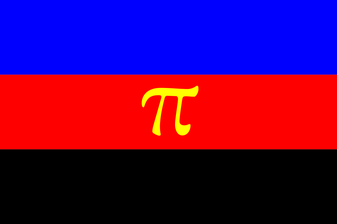
polyamory pride flag
Polyamory (from Greek πολύ poly, "many, several", and Latin amor, "love") is the practice of, or desire for, intimate relationships with more than one partner, with the informed consent of all partners involved. Polyamory has come to be an umbrella term for various forms of non-monogamous, multi-partner relationships, or non-exclusive sexual or romantic relationships.
Resources for polyamorous people:
- Medium - The Best Polyamory Resources
- More Than Two
- Unmarried Equality - Polyamory Books & Links
- Loving More Nonprofit
- Life Works Psychotherapy - Polyamory & Non-Monogamy Resources
- Conscious Polyamory: A blog about loving more than one - Resources
- r/polyamory - Polyamory Resources List
- Reddit - r/polyamory



